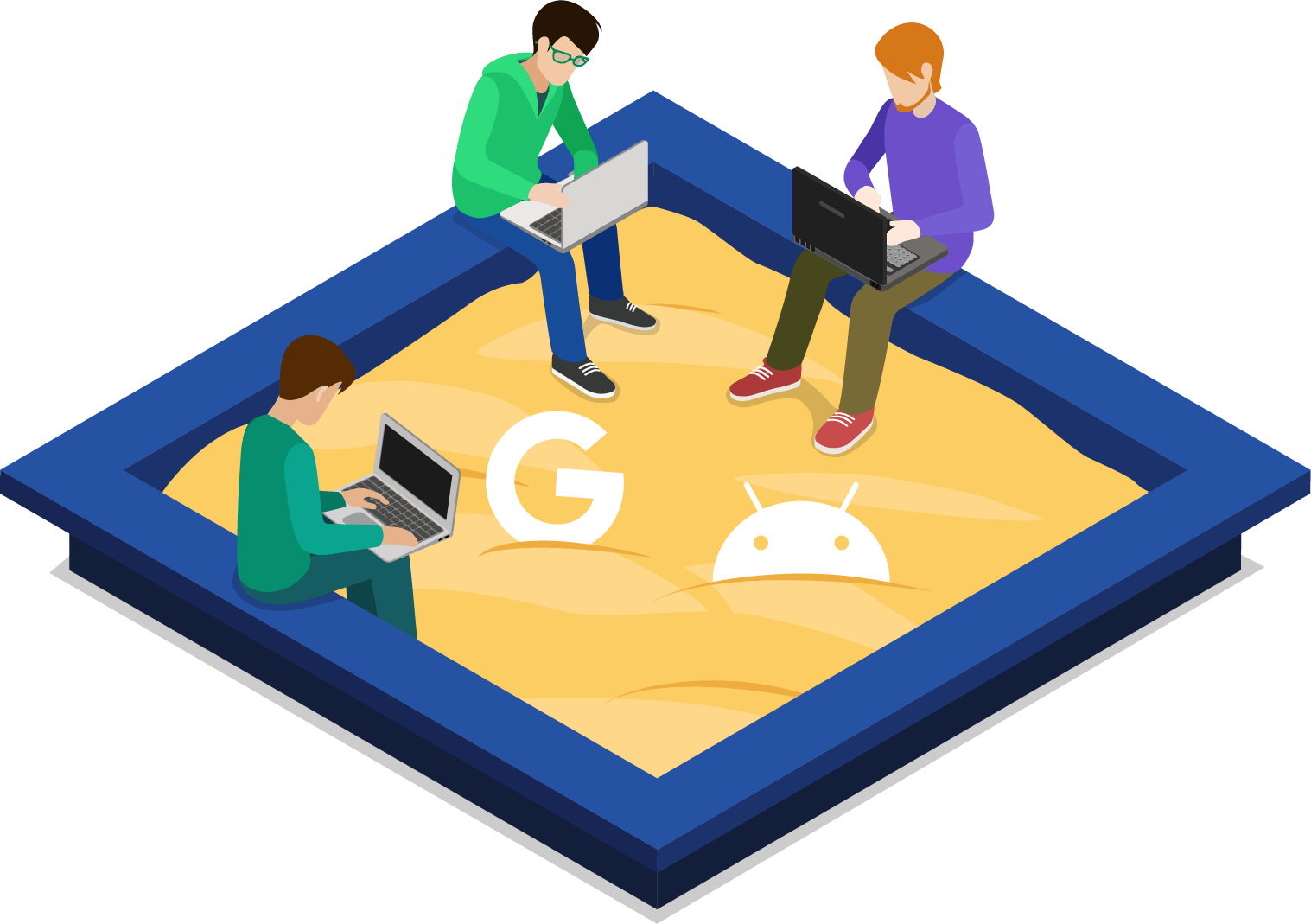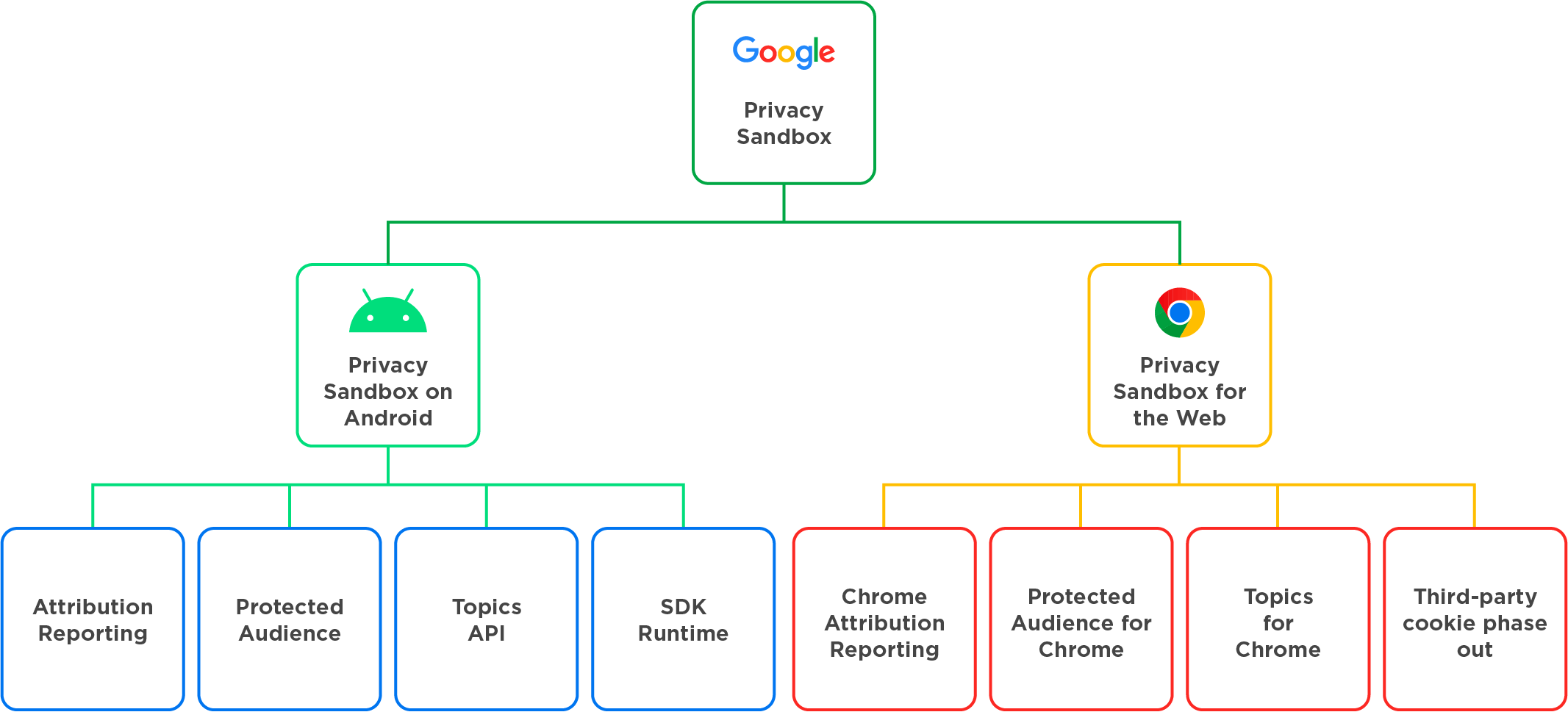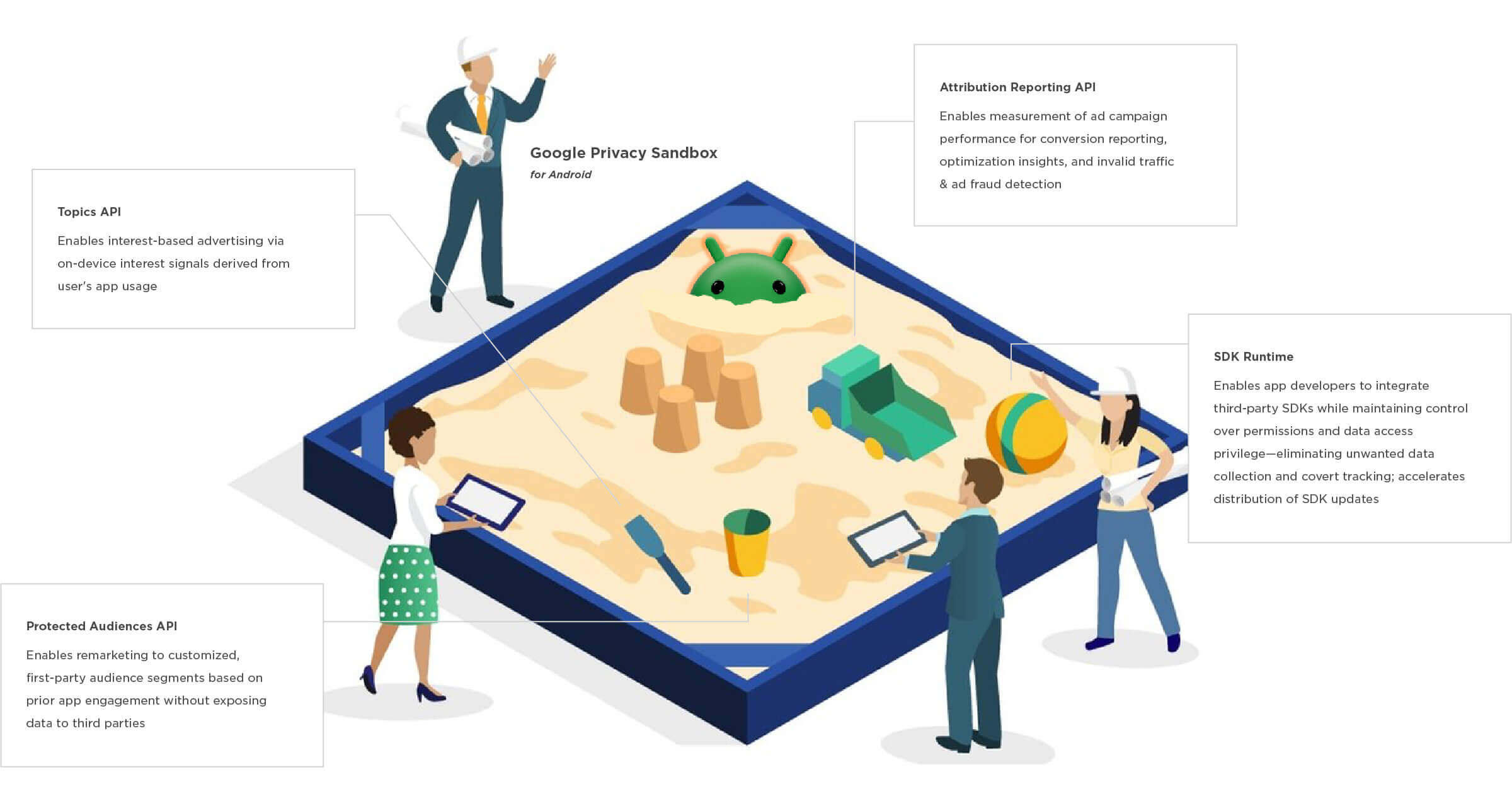How to become an early testing partner with Kochava
Google Privacy Sandbox for Web has recently come increasingly under the microscope as the adtech industry witnesses early signs of third-party cookie deprecation’s impact on ad monetization across the open web. With Google’s 1% third-party cookie deprecation beta for Chrome users starting in early January, initial observations have noted Chrome users without cookies monetizing approximately 30% worse than users with cookies.

IAB Tech Lab’s recent fit gap analysis for Privacy Sandbox APIs has sparked a healthy, albeit slightly tense, public debate. Their testing of many fundamental digital advertising use cases brought into question whether Sandbox would be up to the task of filling the void left by full third-party cookie deprecation in Q3 2024 and other future changes. IAB Tech Lab even noted fragmented documentation as a challenge when attempting to “understand the totality of some aspects of the various APIs supporting it [Sandbox].” You can download IAB Tech Lab’s Privacy Sandbox Fit Gap Analysis for Digital Advertising HERE. The draft is open for public comment until March 22, 2024.
Propelling the adtech industry toward a more privacy-first approach is a massive undertaking, especially for the most dominant mobile and browser ecosystem in the world. Google is taking a collaborative approach with the industry to tackle this monumental shift, and Kochava is thrilled to be partnering with industry leaders such as IAB Tech Lab to ensure that Privacy Sandbox meets our customer’s needs. As a longstanding mobile measurement partner (MMP), Kochava is particularly focused on the coming of Privacy Sandbox for Android—and its implications for the mobile ecosystem.
A Refresh on Privacy Sandbox for Android

In August 2019, Google launched Privacy Sandbox as an initiative to develop new standards for websites to access Chrome user information without compromising user privacy. In February 2022, Google announced that Privacy Sandbox would be coming to its mobile operating system, Android. Privacy Sandbox for Android is often likened to Apple’s SKAdNetwork (SKAN), a privacy-enhancing technology for understanding iOS campaign performance in a privacy-first world, although the scope and impact of Sandbox will extend beyond SKAN’s purview.
In their own words, here are Google’s stated goals with Sandbox for Android:

So what are the tools in the Sandbox? As illustrated in the following graphic, Privacy Sandbox on Android consists of four primary technologies. Let’s unpack each in further detail.

Attribution Reporting API
The Attribution Reporting API serves as a privacy-first solution for marketers to measure the effectiveness of their advertising campaigns. It facilitates the aggregation of conversion reporting data (triggers) from different sources (i.e., attribution data from an ad click or impression) while maintaining individual user privacy. Using this API, marketers can assess the impact of campaigns without compromising individual user identities—ensuring privacy compliance while still providing a base level of performance insight for the purposes of campaign optimization.
Similar to SKAN for iOS, the Attribution Reporting API within Sandbox features privacy-preserving thresholds and outputs only anonymous, aggregated performance data. No user or device-level data is available. Unlike SKAN, which originally supported only app-to-app conversion paths (until the release of web-to-app support for Safari in SKAN 4.0), Sandbox will support app-to-app, app-to-web, web-to-app, and web-to-web user paths from the outset.
This API supports observance of measurement data through two types of attribution reports:
- Event Level Reports connect specific attribution sources from an ad click or ad impression with trigger data from conversions. The fidelity of signal output is more limited, as the connection is one-to-one.
- Aggregatable Reports provide a richer fidelity of trigger conversion data, but in only an aggregate format not necessarily tied to particular attribution source data.
Kochava is currently focused on testing Event Level Reports, which more closely resemble the style of reporting through SKAN on iOS.
Why it’s important
The current state of mobile attribution on Android relies on Google Advertising ID (GAID), UTM referrer, and/or other device characteristics, including user agent and IP address, that may be transmitted off device to perform one-to-one attribution between an ad impression or click and the resulting conversion. The Attribution Reporting API will eliminate reliance on this user and device-level data and bring advertising measurement on device. Sensitive signals will no longer need to be sent off device—making them unavailable for unauthorized collection, use, and covert tracking. With the eventual deprecation of GAID, UTM referrer, and access to other device signals, the Attribution Reporting API will be the lifeline through which marketers can understand the performance of their campaigns to inform their optimization decisions.
See Google Developer Documentation HERE.
Protected Audience API (formerly FLEDGE)
Originally named FLEDGE, now affectionately called PAAPI (Protected Audience Application Programming Interface), this set of APIs aims to support on-device auctions for remarketing and custom audience segmentation based on interest groups. The goal is to serve personalized ads to users in line with previous app engagement, but without any third-party data sharing.
Why it’s important
User data no longer needs to be sent off device for the purposes of building user profiles attached to GAIDs or other device/user-data derived profiles for personalized ad targeting across ad networks, DSPs, and other ad platforms. Adtech vendors will be able to tap into anonymous, yet highly accurate signals to inform ad buys based on user behaviors, interests, and historical app usage.
See Google Developer Documentation HERE.
Topics API
The Topics API in Google’s Privacy Sandbox for Android is designed to give marketers a privacy-centric method to target relevant audiences based on their interests. Advertisers can understand the topics engaged by users and serve them personalized and targeted ads without revealing individual user identities—respecting user privacy and maintaining data confidentiality. A topics taxonomy will provide hundreds to potentially thousands of human-curated interest labels that help categorize a user by interests.
Why it’s important
One might liken this to IAB Tech Lab’s Audience Taxonomy, which provides standard nomenclature for the classification of audience segments. The Topics API will provide the new standard for classifying Android users for targeting purposes by leveraging on-device learning. This replaces ad tech platforms collecting user and device data to build their own profiles on users attached to GAIDs or other third-party generated identifiers.
See Google Developer Documentation HERE.
SDK Runtime
SDK Runtime establishes a more secure framework for apps integrating third-party software development kits (SDKs). Because app developers are not always aware of a third-party SDK’s full functionality and data collection practices, SDK Runtime places third-party SDKs into a modified execution environment featuring well-defined permissions and data access rights privileges.
Why it’s important
Over the years, adtech news publications have featured many stories about rogue, third-party SDKs behind advertising fraud schemes, covert data collection, and other nefarious practices. While these SDKs were intended to leverage valuable app functions and features, rogue actors have been known to hide covert functionality deep within their codebase, enabling them to exploit data-access permissions for nefarious purposes, unbeknownst to the developer who integrated them for legitimate use cases. SDK Runtime technology will put third-party SDKs in a dedicated runtime environment that makes such exploitation impossible—giving app developers and the end consumer peace of mind.
The complete library of Kochava Android SDKs will be available through SDK Runtime.
See Google Developer Documentation HERE.
MMPs and the Attribution Reporting API
Let’s zoom in on the Attribution Reporting API—a key focus for the team here at Kochava.
Mobile measurement partners (MMPs) are able to integrate with the API to provide conversion analytics and performance insights for advertisers under the new privacy framework of Sandbox. It’s important to note that while ad network vendors can use the API to receive self-attributed event and summary reports for conversions they drive/influence, only an MMP is positioned to provide cross-network, last-touch attribution by integrating with the array of aggregation services set up by various ad network vendors. Google lays out multiple scenarios for cross-network attribution with an MMP in this developer documentation. Similar to how MMPs work as a unified decoder ring of sorts for the various SKAN-enabled media partners with which a brand is running campaigns, MMPs will again be sitting at the intersection, translating cross-network Sandbox data into a holistic reporting layer marketers can make sense of.
The Attribution Reporting API also provides for lookback window configurability adjustable by the advertiser and/or via their MMP partner. This is more flexibility than we see on SKAN, where such windows are fixed. Sandbox also provides 30 days of post-install event measurement for better user quality and retention insights out of the gate, compared to what SKAN offered at launch.
As neutral third-party measurement services, Kochava and other MMPs play an important role in the advertising ecosystem. The Attribution Reporting API provides both event-level and aggregated attribution reporting to MMPs, which along with other aggregated omni-channel data helps MMPs empower marketers to understand overall campaign effectiveness and optimize spend across multiple media channels. The Privacy Sandbox model creates opportunities for MMPs to innovate with privacy-focused solutions that decomplicate the lives of marketers amid the increasingly complex privacy considerations of digital advertising.
Kochava Sandbox Testing
Kochava engineering and Android SDK development teams have commenced testing of the primary Attribution Reporting API flow:
- Registering ad clicks or views (impressions) that lead users to a particular app or website to complete a conversion (known as attribution sources)
- Next, registering triggers (conversions) that signify a user taking a valuable action such as installing an app, making a purchase, or starting a free trial
- The Attribution Reporting API receiving both attribution sources and triggers, making relevant matches for conversion attribution and sending one or more triggers off device through event-level and aggregatable reports
Are you interested in Sandbox testing with Kochava?
While testing is already underway with a small selection of clients and partners, we’re looking to expand our testing group. Please note that currently our testing is focused on Event Level Reports.
Advertisers
If you’re an advertiser and interested in early Sandbox testing with Kochava, please reach out to your client success manager or email Support@Kochava.com
Media Partners
If you’re an integrated media partner and interested in early Sandbox testing, please contact our Integrations team by emailing Integrations@Kochava.com
Stay Updated
Privacy Sandbox for Android is a multi-year effort, and Google has not given an exact timeline for general release. Subscribe to our newsletter to stay connected and up to date on future Privacy Sandbox milestones and related updates to Kochava products and services. You can also enroll for notifications directly from Google.



